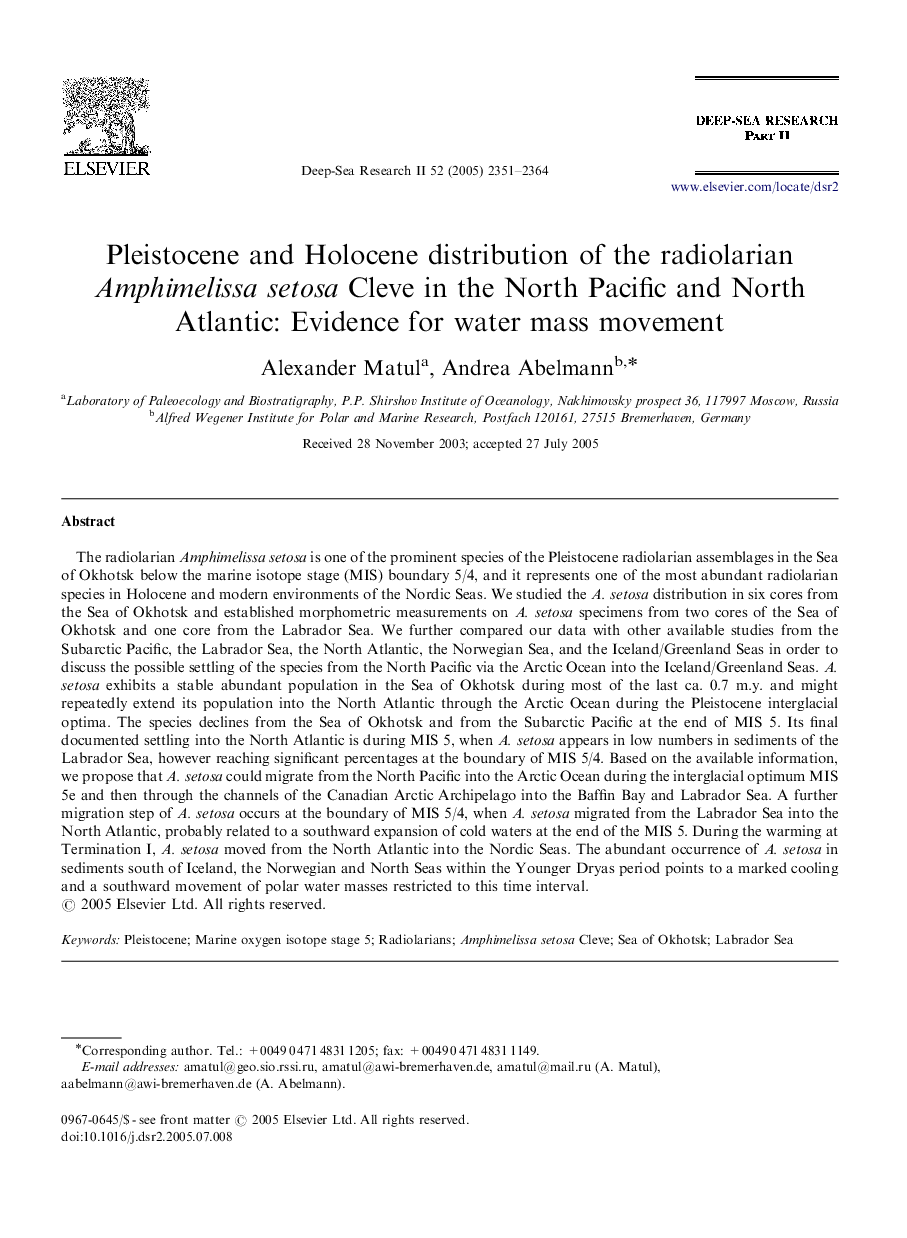| کد مقاله | کد نشریه | سال انتشار | مقاله انگلیسی | نسخه تمام متن |
|---|---|---|---|---|
| 4537689 | 1626523 | 2005 | 14 صفحه PDF | دانلود رایگان |

The radiolarian Amphimelissa setosa is one of the prominent species of the Pleistocene radiolarian assemblages in the Sea of Okhotsk below the marine isotope stage (MIS) boundary 5/4, and it represents one of the most abundant radiolarian species in Holocene and modern environments of the Nordic Seas. We studied the A. setosa distribution in six cores from the Sea of Okhotsk and established morphometric measurements on A. setosa specimens from two cores of the Sea of Okhotsk and one core from the Labrador Sea. We further compared our data with other available studies from the Subarctic Pacific, the Labrador Sea, the North Atlantic, the Norwegian Sea, and the Iceland/Greenland Seas in order to discuss the possible settling of the species from the North Pacific via the Arctic Ocean into the Iceland/Greenland Seas. A. setosa exhibits a stable abundant population in the Sea of Okhotsk during most of the last ca. 0.7 m.y. and might repeatedly extend its population into the North Atlantic through the Arctic Ocean during the Pleistocene interglacial optima. The species declines from the Sea of Okhotsk and from the Subarctic Pacific at the end of MIS 5. Its final documented settling into the North Atlantic is during MIS 5, when A. setosa appears in low numbers in sediments of the Labrador Sea, however reaching significant percentages at the boundary of MIS 5/4. Based on the available information, we propose that A. setosa could migrate from the North Pacific into the Arctic Ocean during the interglacial optimum MIS 5e and then through the channels of the Canadian Arctic Archipelago into the Baffin Bay and Labrador Sea. A further migration step of A. setosa occurs at the boundary of MIS 5/4, when A. setosa migrated from the Labrador Sea into the North Atlantic, probably related to a southward expansion of cold waters at the end of the MIS 5. During the warming at Termination I, A. setosa moved from the North Atlantic into the Nordic Seas. The abundant occurrence of A. setosa in sediments south of Iceland, the Norwegian and North Seas within the Younger Dryas period points to a marked cooling and a southward movement of polar water masses restricted to this time interval.
Journal: Deep Sea Research Part II: Topical Studies in Oceanography - Volume 52, Issues 16–18, August–September 2005, Pages 2351–2364